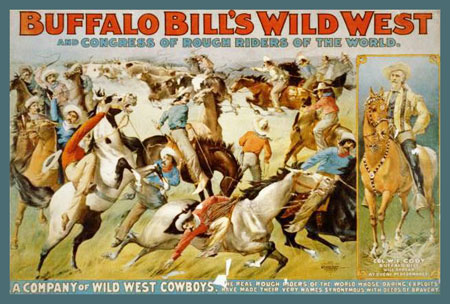Pioneer Life (continued)
Since Western lands were open and grassy, cattle ranching became an economic boom. Special livestock railroad cars could haul cattle to Eastern cities from meatpacking hubs such as Chicago. The cattle had to travel from Texas. Before railroad tracks ran from Texas, cowboys would drive herds from Texas to cities such as Kansas City, where herds could be loaded in livestock cars for travel. An entrepreneur could purchase cattle for $10 a head and sell them for $40 a head. They could pay a cowboy between $80 and $90 to drive the cattle herd to the railroad. Cattle drives could take cowboys two to three months.
As more pioneers moved westward, cowboys contended with farmers for space. It was not uncommon for a herd of cattle to trample a farmer’s crops. Sheep breeders from northern California and Oregon also herded sheep to railroad depots and competed with cattlemen for grass for herds to consume and for space in livestock cars. Some cowboys mapped their trails. Cowboy Jesse Chisholm mapped a trail between San Antonio, Texas and Abilene, Kansas which became known as the Chisholm Trail.
As more cattlemen competed for grassland and railroad cars to move cattle, and as more railroad tracks were built, cattle drive routes became shorter. Some entrepreneurs began building large cattle ranches with grazing areas and hay bales for winter food. The large cattle ranches provided jobs for many people, including cowboys.

A cattle drive
The work of the cowboy became romanticized. Roundups and roping became sport for the public to watch. Buffalo Bill, who got his name because he was a buffalo meat supplier, was known for his touring Wild West show. The show was based on his adventures as a Pony Express rider and frontiersman, and included such acts as cowgirl Annie Oakley and cowboy Wild Bill Hickok.

Poster for Buffalo Billís Wild West show